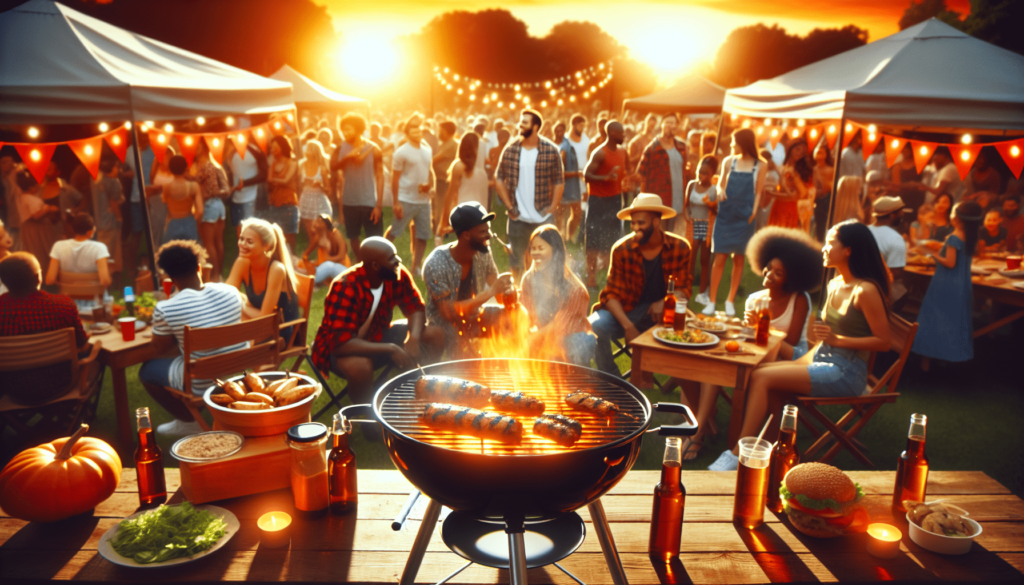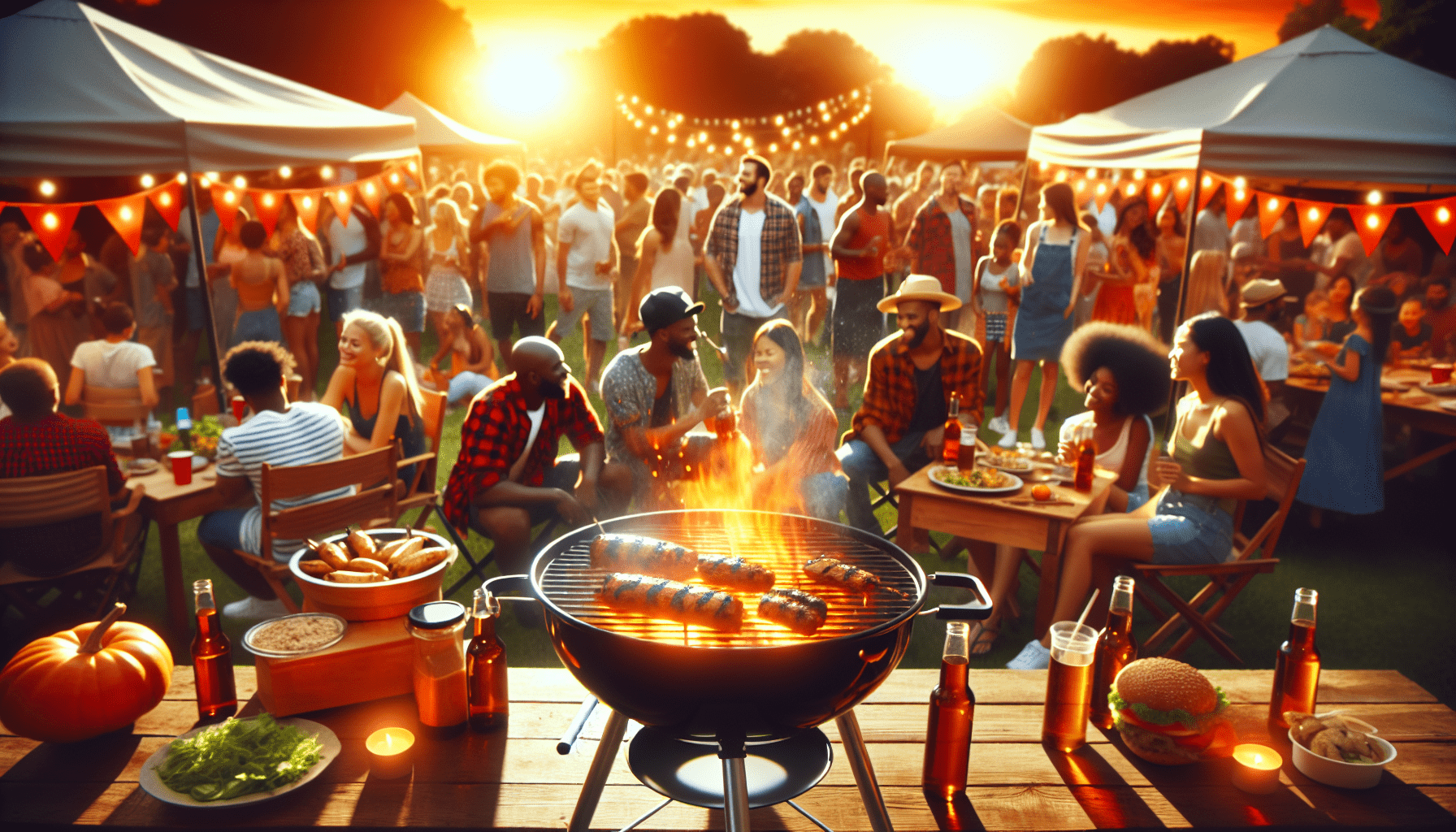Are you looking to bring your community together for a fun and delicious event? In this article, we will explore the steps to successfully organize a community BBQ event. From planning the menu and securing a location, to inviting participants and coordinating activities, we will provide you with all the tips and tricks you need to make your community BBQ event a memorable success. Get ready to fire up those grills and bring your community closer together!
Selecting the Date and Venue
Choose a suitable date
When organizing a community BBQ event, the first step is to choose a suitable date. Consider factors such as weather, availability of participants, and any conflicting events in the community. It’s important to select a date that maximizes attendance and ensures the event’s success.
Find an appropriate venue
The next step is to find an appropriate venue for the BBQ event. Look for spacious outdoor areas such as parks, community centers, or even private properties with ample space. Ensure that the venue has facilities such as restrooms and seating areas to accommodate the attendees comfortably.
Check availability and obtain necessary permits
Before finalizing the venue, check its availability and secure any necessary permits or permissions required from local authorities or property owners. This may include permits for using public parks or arranging road closures, depending on the event’s scale. Make sure to check all the legal obligations and protocols to ensure a smooth and hassle-free event.
Forming an Organizing Committee
Recruit volunteers for the committee
To successfully organize a community BBQ event, it is essential to form an organizing committee. Recruit volunteers from within the community who are enthusiastic and dedicated to making the event a success. Look for individuals with different skills and strengths to ensure a well-rounded team.
Assign roles and responsibilities
Once the committee is formed, assign specific roles and responsibilities to each member. This could include tasks such as event coordination, food and beverage management, logistics, promotion, or entertainment. Ensure clear communication and regular check-ins to track progress and address any challenges or concerns.
Establish regular meeting schedule
To ensure effective collaboration, establish a regular meeting schedule for the organizing committee. This will allow members to discuss updates, share ideas, and make decisions collectively. Consider utilizing online communication tools such as video conferencing or project management platforms to accommodate everyone’s availability and facilitate efficient communication.

Setting a Budget
Estimate expenses
Setting a budget is crucial for organizing a community BBQ event. Begin by estimating the expenses involved, including food, beverages, venue rental (if applicable), equipment rental, promotional materials, permits, and any additional costs. Research previous similar events or consult with experienced organizers for accurate estimations.
Seek sponsorships and donations
To alleviate the financial burden, seek sponsorships and donations from local businesses, community organizations, and individuals. Approach potential sponsors with a well-crafted proposal highlighting the benefits they will receive through their support. Additionally, create avenues for community members to donate funds or in-kind contributions, such as food or raffle prizes.
Allocate funds for different aspects of the event
Once funds are secured, allocate them appropriately to different aspects of the event. Prioritize the essentials like food, beverages, and necessary equipment. Additionally, allocate a portion of the budget for promotional materials, decorations, entertainment, and contingency expenses. Adhering to a well-planned budget will help ensure financial success and deliver a memorable event.
Planning the Menu
Consider dietary restrictions and preferences
When planning the menu for a community BBQ event, it is important to consider dietary restrictions and preferences. Take into account common dietary requirements such as vegetarian options, gluten-free choices, and potential allergies. Offer a variety of dishes to cater to different tastes and ensure that everyone can enjoy the food.
Decide on the main dishes, sides, and desserts
Select a range of main dishes, sides, and desserts that are suitable for a BBQ event. Popular main dishes may include hamburgers, hot dogs, grilled chicken, or vegetarian options like grilled vegetables or tofu skewers. For sides, consider classics like coleslaw, potato salad, corn on the cob, and a variety of fresh salads. Indulgent desserts like fruit tarts, brownies, or ice cream can provide a sweet ending to the meal.
Calculate quantities of food needed
Calculating the quantities of food needed is crucial to avoid shortages or wastage. Estimate the number of attendees and the amount of food each person is likely to consume. Consider factors such as the duration of the event and the availability of other food options. It’s always better to have some extra food available to accommodate unexpected guests or to donate to local food banks.

Procuring Supplies and Equipment
Create a checklist of required items
To ensure smooth operations on the day of the event, create a checklist of all the required supplies and equipment. This may include grills, charcoal, tables, chairs, serving utensils, napkins, plates, cups, and garbage bins. Refer to the event plan and consult with the organizing committee to ensure all necessary items are included.
Borrow or rent necessary equipment
If certain items are not readily available, consider borrowing or renting them from local businesses, community centers, or even fellow community members. Many organizations or individuals may be willing to lend or rent out equipment for a community event. Make arrangements well in advance to secure the necessary equipment and avoid last-minute challenges.
Purchase food, beverages, and utensils
Depending on the scale of the event, purchasing food, beverages, and utensils may be necessary. Approach local suppliers or wholesalers to obtain the required quantities at competitive prices. Ensure food and beverages are stored appropriately to maintain quality and safety standards. Purchase durable and eco-friendly utensils whenever possible to minimize waste and environmental impact.
Promoting the Event
Design and distribute flyers or posters
To create awareness and generate excitement for the community BBQ event, design attractive flyers or posters. Include relevant event details, such as date, time, venue, menu highlights, and any special activities. Distribute these flyers or posters in community centers, schools, local businesses, and other high-traffic areas to maximize reach.
Utilize local media and online platforms for promotion
Harness the power of local media and online platforms to promote the event. Reach out to local newspapers, radio stations, and television channels to request coverage or advertisements. Additionally, create event pages on social media platforms, community websites, and online event calendars. Encourage attendees and volunteers to share the event information with their networks to expand the reach even further.
Create a social media event page
A social media event page can serve as a centralized platform for sharing updates, engaging with the community, and promoting the event. Regularly post about the event’s progress, highlight sponsors and volunteers, and share enticing visuals or testimonials from past events. Encourage attendees to RSVP or show interest on the event page to gauge attendance and generate excitement.
Organizing Activities and Entertainment
Plan games and competitions for all ages
Incorporate games and competitions to keep attendees engaged and entertained throughout the event. Plan activities suitable for all ages, such as sack races, three-legged races, bean bag toss, or water balloon fights. Consider awarding prizes or small tokens of appreciation to winners to add a competitive edge and encourage participation.
Consider hiring live music or DJs
Adding live music or hiring a DJ can create a vibrant atmosphere and further enhance the enjoyment of the community BBQ event. Research local musicians or bands who can perform live, or seek recommendations for DJs who specialize in creating a festive ambiance. Ensure the music selection caters to diverse tastes and fosters a lively and inclusive environment.
Arrange for face painting or other entertainment options
To cater to younger attendees, consider arranging for face painting, balloon twisting, or other forms of entertainment. Hire professional face painters or enlist the help of volunteers with artistic skills. Additionally, explore the possibility of organizing an arts and crafts booth or setting up a temporary photo booth to create memories and engage attendees.
Managing Logistics on the Day of the Event
Coordinate setup and decoration of the venue
On the day of the event, coordinate the setup and decoration of the venue. Assign specific tasks to volunteers, such as setting up tables and chairs, decorating the space, and arranging food and beverage stations. Ensure clear signage to guide attendees and make the venue visually appealing. Consider incorporating a theme or color scheme to create a cohesive and festive atmosphere.
Organize parking and crowd control
Efficient parking and crowd control are essential to ensure a smooth and safe experience for attendees. Plan designated parking areas or collaborate with nearby businesses or parking facilities to accommodate the expected number of vehicles. Clearly mark entrances and exits, establish clear pathways within the venue, and assign volunteers to assist with parking guidance and crowd management.
Ensure proper waste management and cleanup
Implement a waste management system to maintain a clean and eco-friendly environment throughout the event. Place clearly labeled trash and recycling bins at strategic locations. Assign volunteers to continuously monitor and empty the bins, ensuring proper disposal and separation of waste. Plan for a thorough cleanup after the event, leaving the venue in the same condition or better than before.
Ensuring Safety and Security
Arrange for first aid services
Prioritize the safety and well-being of attendees by arranging for first aid services. Collaborate with local healthcare providers, such as hospitals, clinics, or medical organizations, to have a trained medical professional on-site. Ensure accessible first aid stations and clearly communicate their location to attendees. Prepare for potential emergencies by having appropriate medical supplies readily available.
Implement safety measures for grilling and cooking
If grilling or cooking is part of the event, strict safety measures should be implemented. Ensure that the designated cooking area is well-ventilated and away from highly flammable objects. Assign trained volunteers to handle grills and cooking equipment safely. Provide fire extinguishers and ensure volunteers are aware of fire safety protocols to prevent accidents and minimize risks.
Coordinate with local authorities for security support
Coordinate with local authorities, such as police or security agencies, to ensure adequate security measures are in place. Share event details, expected attendance, and the event program to help them assess and allocate appropriate resources. Discuss any necessary permits or security regulations that need to be followed. Collaborating with local authorities will promote a secure and enjoyable experience for all attendees.
Expressing Gratitude
Thank volunteers and sponsors through verbal appreciation
Express your gratitude to the volunteers and sponsors who contributed to the success of the community BBQ event. Offer sincere verbal appreciation during committee meetings, planning sessions, and on the day of the event. Recognize their efforts and emphasize how their support has made a significant impact on the event and the community as a whole.
Consider providing small thank-you gifts or certificates
Consider providing small thank-you gifts or certificates as tokens of appreciation to volunteers and sponsors. This could include personalized thank-you notes, event-branded merchandise, or gift cards from local businesses. The gesture will not only show your appreciation but also encourage continued support and participation in future community events.
Write and send thank-you notes after the event
After the event, take the time to write personalized thank-you notes to volunteers and sponsors. Express your gratitude once again and highlight specific contributions they made. Handwritten notes add a personal touch and demonstrate sincere appreciation for their hard work and support. Send these notes promptly to ensure a lasting impression and further foster a sense of community spirit.
In conclusion, organizing a community BBQ event requires careful planning, effective communication, and community involvement. By following these steps, from selecting the date and venue to expressing gratitude, you can orchestrate a memorable and enjoyable event that brings the community together. Embrace the spirit of collaboration, creativity, and fun to create a lasting impact and foster stronger bonds within your community.

